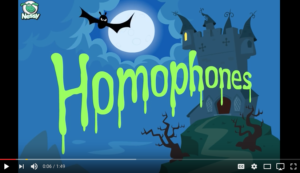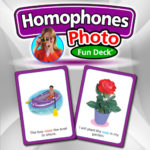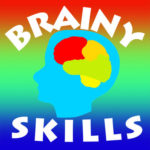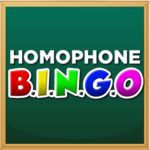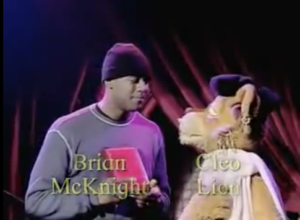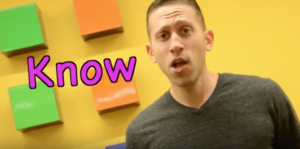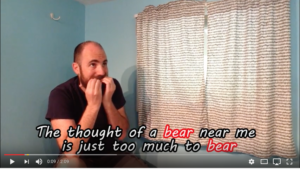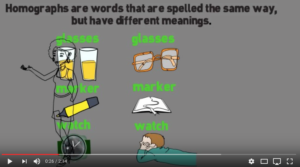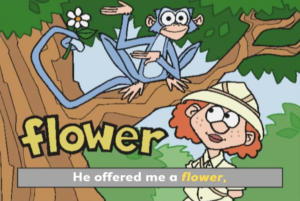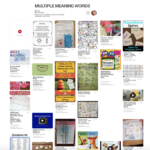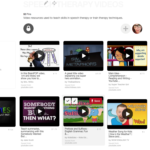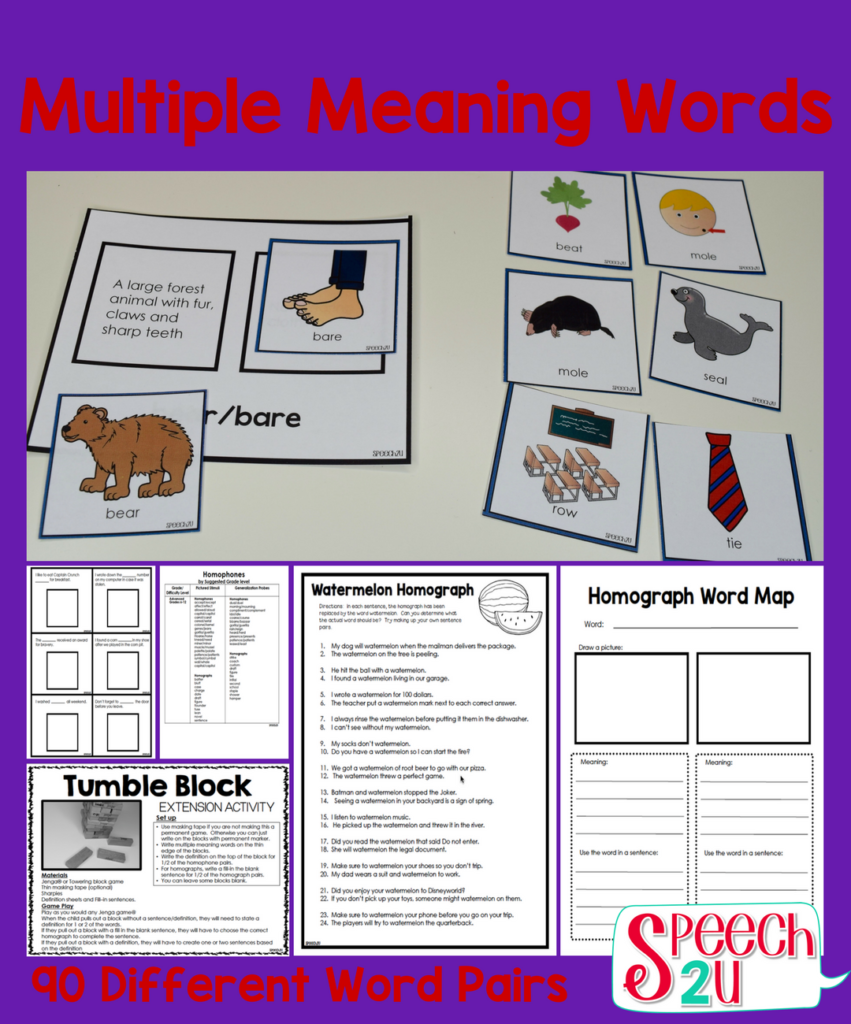Teaching homophones and homonyms is one strategy I use to improve vocabulary skills for my clients and students. Last week, I talked about how I approach teaching multiple meaning words. Today, I wanted to share some quick activity ideas and resources I’ve used.
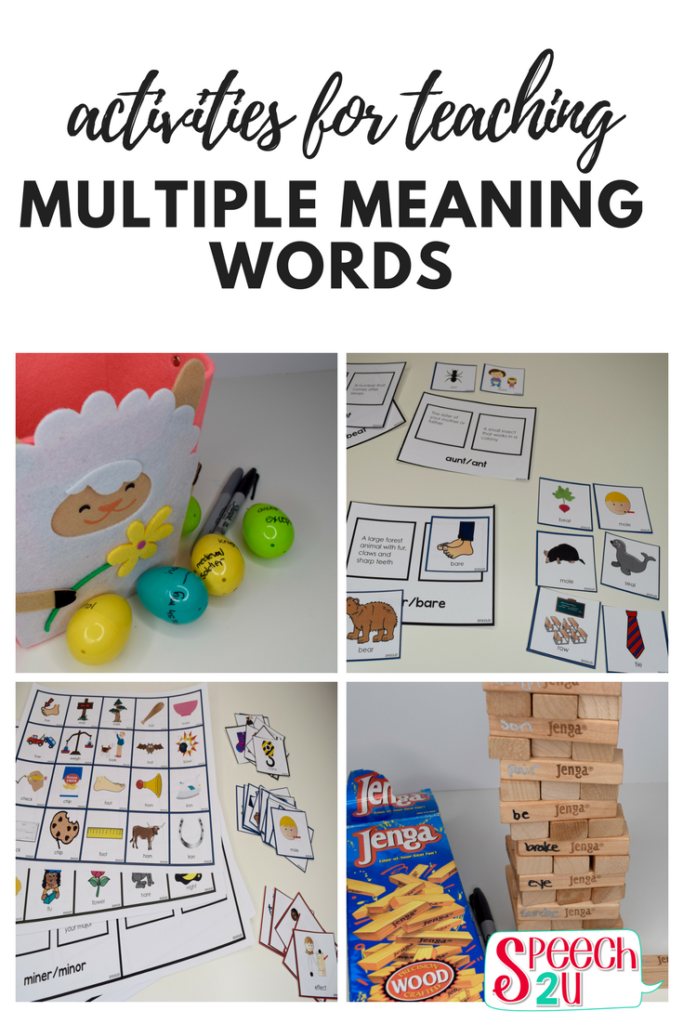
Multiple Meaning Word Activities
An easy way to practice multiple meaning words, is to adapt materials you already have. I used my friend Sue’s idea and adapted my Jenga blocks at home. I used a homophone word list from my interactive multiple meaning word product, but you could just as easily find a list of words online.
I wrote one homophone on either of the narrow sides. On the top, I wrote a definition or a fill in the blank sentence. It was
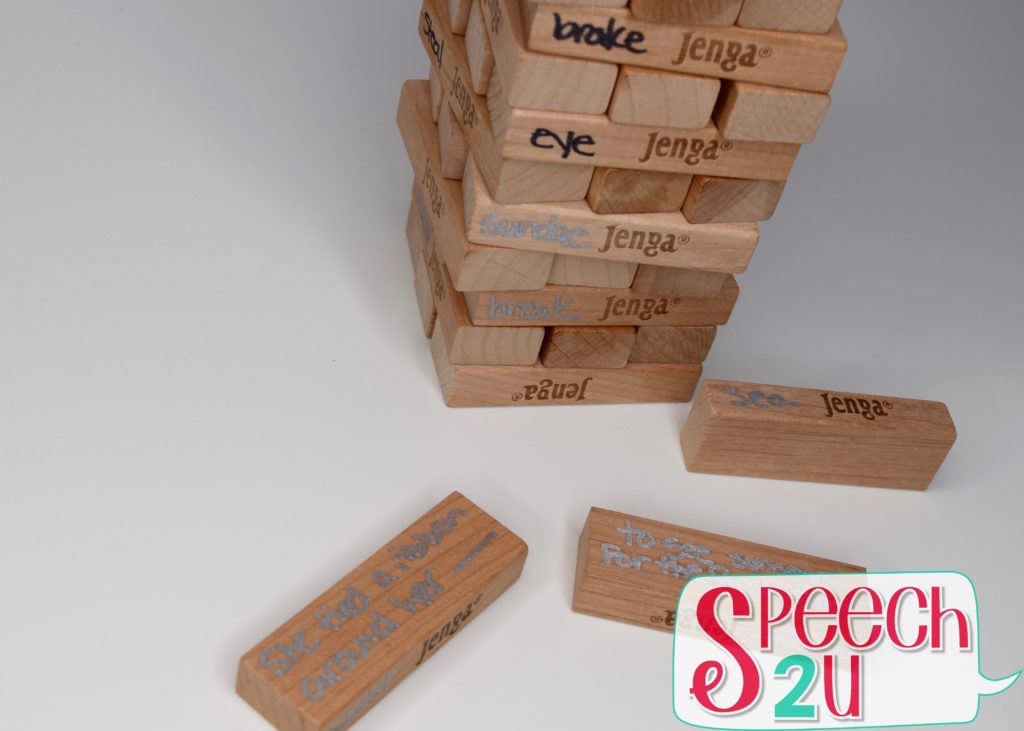
With Easter coming up, I made some multiple meaning word eggs. I wrote the multiple meaning word pair on the top of the egg and then a short definition on the bottom. I plan to hide them around the room. In order to “open” them and get their treat, they have to turn the top so that the correct homophone matches the definition.
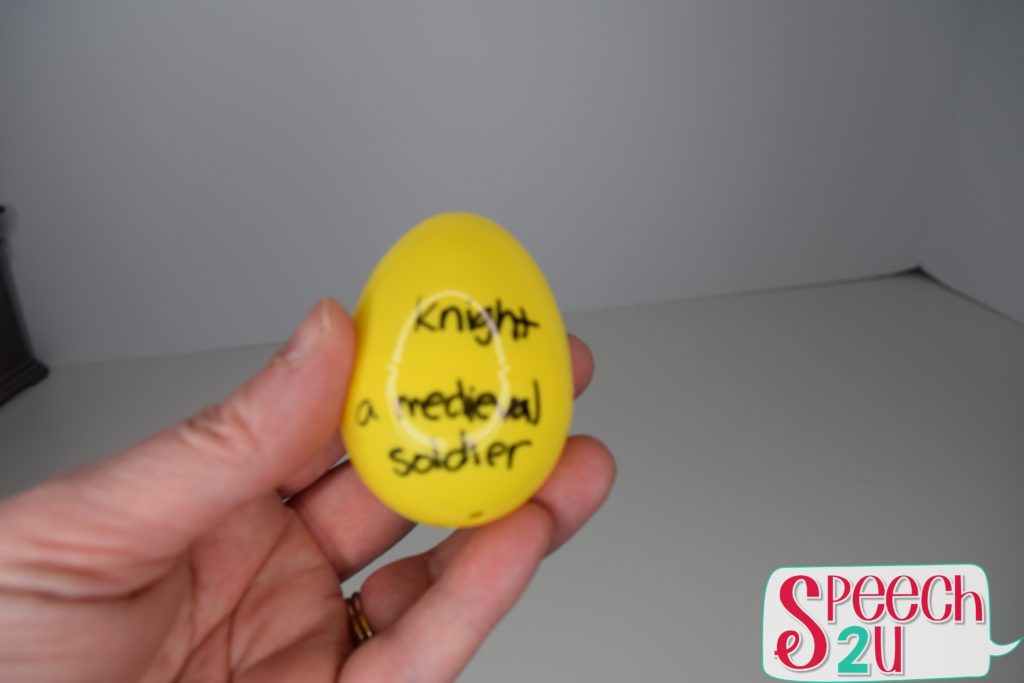
Multiple Meaning Word Power Point Activities:
This is the best website for FREE powerpoint activities. They also have links to lesson plans and some online games to play. Two of my favorites are:
- Homophones!
- Homophone Search.
The Homonphones! presentation gives clues like “Two of a Fruit” I usually hide the answer to see if they can determine the answer (pair of a pear). They can earn bonus points by spelling the words correctly.
Multiple Meaning Word Games:
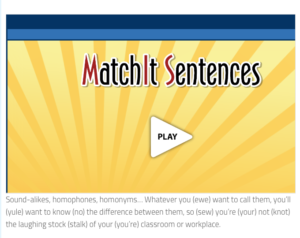
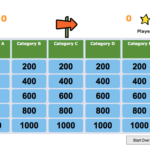
Tracy Boyd is a speech language pathologist who has created a lot of different games on the website Quia. They have templates that include Who wants to be a millionaire and Jeopardy and are fun to play in a small group. Check out her Homograph challenge board.
Multiple Meaning Word Apps
I’m not using my iPad in therapy as much as I was a few years ago, but I do use these apps on occasion. I’ve included affiliate links for your convenience. (Affiliate programs pay a small percentage of the sale of an item to the affiliate for linking up. If you are thinking of purchasing a product, why not help out the blog that has recommended it.)
This is a great free app to recommend for homework. Students need to fill in the blank by choosing the correct homophone.
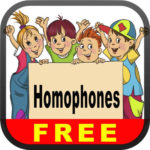
The full colored photos are nice if you are working with older students who may feel like illustrations look to childish. A simple flash card app, you can have your student choose the correct homophone from a set of two or turn on open ended responses so they are required to name the homophone.
Brainy Skills: Multiple Meaning Words
This is a simple app, students can earn points by choosing between definitions given the multiple meaning word in context. An example would be: “Any shiny jewel will look on good on this ring.” The student chooses between jewelry and sound for the definition. You can choose the easy or hard level. It reinforces skills with verbal praise. The voice sounds a little robotic and I tend to turn the sound off when playing the game. There are no pictures in this app.
Another app to check out if you want something different to practice definitions. You can choose between a bingo card with 9 or 25 cards. The homophones are written on the bingo cards. A sentence is ready, and the student needs to find the correct word based on the sentence meaning. One nice feature is you can turn on visual aids which will give you a visual of the homophone as the sentence is being read.
If you are looking for an app that includes a variety of activities, you may want to check this app out. There are a lot of options for customizing including choosing the vocabulary targets you are going to use and which activity you are going to practice. These include: auditory bombardment, picture identification, fill-ins, and definitions. It includes both receptive and expressive tasks.
Multiple Meaning Word Videos:
I’m so impressed with the number of short videos you can find on YouTube which introduce educational concepts. It’s fun for the kids and the music helps them to remember the concepts. Check these out and then use safeyoutube.net to convert the videos so that there are no ads or side ads playing when you show these to your students. It only took me two mistakes to remember to load and check out the videos prior to showing them. One was with a middle school student who hadn’t heard of the movie Babe. Seriously. I searched “babe” with a middle school student. So now I search with my computer away from students. The other mishap did involve YouTube. I had a client who would work to watch a One Direction video at the end of his session. We’d have a little dance party. Luckily, I had pulled the video up without him seeing it, but he started to get really frustrated when I didn’t let him see the screen. Because I didn’t think he needed to see the 50 Shades of Gray trailer.
Synonyms, Antonyms, and Homonyms by Charles Johnson at Edusoul.net.
A good video to review the meanings of each of these language concepts as well as providing a few examples of each. I’ll start with this video until my clients have a good definition of each concept.
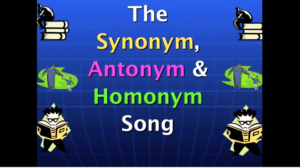
Brian McKnight sings about homophones. We usually watch this and have a contest to see how many of the homophones the kids can remember. Afterwards we make a list and define each word.
This one cracks me up. The teacher is singing a parody about homophones using “Telephone” by Lady Gaga. I love his energy and enthusiasm.
